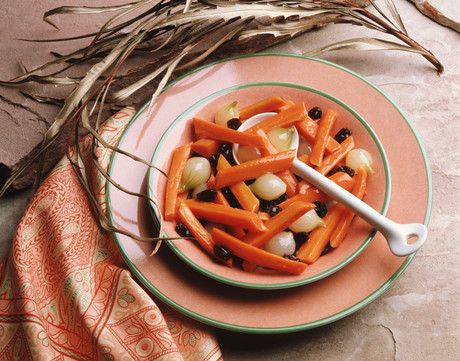Extravagant, indulgent descriptors can increase healthy food selection

Want to increase sales overall or consumption of certain foods? It could all get down to your product names and descriptions.
Indulgent labelling using flavourful, exciting descriptions was recently applied to vegetables by some Stanford University psychology students. More diners selected the vegetables if they had indulgent, decadent descriptions. Vegetable consumption actually increased simply by revving up the naming.
This technique could be used to make healthier foods more appealing and encourage people to make healthier dining choices.
Traditionally people assume healthy foods are less tasty, less enjoyable, less filling and less satisfying than standard foods. This is obviously not necessarily true but it does make ‘selling’ healthier diets more challenging.
In 2011, Alia Crum, an assistant professor of psychology and principal investigator of the Stanford Mind & Body Lab, led a team that looked at the hormonal response when test participants were given milkshakes labelled as “low-calorie and restrictive” or the same milkshake with a “high-calorie and indulgent” label. When participants thought the milkshake was low-calorie their ghrelin (hunger hormone) levels were higher than when they thought the milkshake was the more indulgent version.
In the current study the researchers collaborated with Stanford Residential & Dining Enterprise to test how labelling could impact consumption of healthier menu choices. Labelling was divided into four options: basic, healthy restrictive, healthy positive or indulgent.
Green beans, for instance, were described as “green beans” (basic), “light ’n’ low-carb green beans and shallots” (healthy restrictive), “healthy energy-boosting green beans and shallots” (healthy positive) or “sweet sizzlin’ green beans and crispy shallots” (indulgent).
Research assistants monitored the number of diners who chose the vegetable and how much was consumed over the course of each lunch period for 46 days. There were no changes to how the food was prepared or presented throughout the study.
The researchers found that labelling vegetables with indulgent descriptions led more diners to choose vegetables and resulted in a greater mass of vegetables served per day. Diners chose vegetables with indulgent labelling 25% more than basic labelling, 35% more than healthy positive and 41% more than healthy restrictive. In terms of mass of vegetables served per day, vegetables with indulgent labelling were consumed 16% more than those labelled healthy positive, 23% more than basic and 33% more than healthy restrictive.
This simple and low-cost strategy of altering the descriptions of healthy foods could have a substantial impact on consumption of nutritious foods in dining settings.
What's new on the shelf
From classic reinspired ice cream to West African flavours in a jar and whiskey aged in a gaol,...
What's new: six on the shelf
From classic chocolatey flavours reinspired to Korean delicacies, have a look at what's new...
What's new on the shelf?
From Aussie/American fusion-inspired hot sauce to a canned protein drink for gamers, have a look...














